
History Meets Hip and Happening in Albuquerque

From my perch in the sky, the view is sublime. The iconic Sandia Mountains appear as sentinels of the high desert and the rugged lava escarpments provide a Mars-like topography. Below, the Rio Grande snakes through the expansive landscape, while matchbox size houses and buildings look like Lego constructions.
I’m floating high above this stunning panorama in a Rainbow Ryders hot air balloon. Our pilot in command is Troy Bradley, an experienced balloonist with almost 8,000 balloon piloting hours. He also holds 64 World Records in the sport and has claimed the title of New Mexico State Hot Air Champion four times. We’re in good hands!
The wind is gently carrying us up, up and away, as the ground unfolds before our eyes. Minutes ago, the sun rose, streaking the valley with red and orange hues. We are joined by other balloons, which provide pops of bright color against a now bluer than blue New Mexico sky. A few hover above, some below, and one even momentarily “kisses” our balloon. Another dips down into the river for a “splash and dash.”
All too soon, the ride ends and we’re on terra firma once again.
Upon landing, we indulge in a post-flight celebration with a champagne toast to our aeronautical journey. We also receive proof of our ascension in the form of a certificate. Something to frame along with all the picture-perfect images!
A hot air balloon ride often ranks atop many travelers’ bucket lists. It’s not hard to understand why, as the experience is magical. It’s an unmatched way to provide a unique perspective of the environment. And what better place to embark on this enchanting journey than Albuquerque, the “hot air balloon capital of the world.”
Home to the famous International Hot Air Balloon Fiesta, Albuquerque has long been a magnet for hot air balloonists and fans of the sport. The annual festival, which recently marked its 48th anniversary, draws almost a million people from across the globe. What started as a quaint launch of thirteen balloons is now a massive nine-day celebration with nearly 600 balloons participating, representing forty-one states and seventeen countries.
It’s a veritable feast for the senses, with the sound of balloon burners simultaneously igniting, the aroma of fresh doughnuts and breakfast burritos, the roar of the crowd as the balloons take to the sky and the look of awe on thousands of upturned faces, as they gaze at the stunning op-art canvas in the sky.
To complement your hot air balloon ride in the Land of Enchantment, stop in at the Anderson-Abruzzo Albuquerque International Balloon Museum. Exhibits explore the past, present and future of ballooning, as well as subjects related to the science, engineering and technology of lighter-than-air aviation and other innovative forms of flight.
Ballooning is only one of many fun experiences visitors can have in Albuquerque. The city is a culturally rich and naturally beautiful metropolitan area with deep, historical roots. It boasts an exciting food and wine scene, a vibrant public arts program (responsible for bedecking the city with nearly a thousand paintings, sculptures and murals), fifteen museums, several hundred parks and green-spaces, shops and galleries galore and an abundance of outdoor pursuits to appeal to adrenaline seekers of all kinds.
As you explore Albuquerque, you might hear it affectionately called “Burque,” by the locals. It’s an easy way to shorten the town’s rather cumbersome name. You may also hear it referred to as “Duke City.” And although you might think this moniker has to do with John Wayne, aka, “The Duke,” think again. It actually refers to Spain’s Duke of Alburquerque (the extra “r” was eventually dropped), Viceroy Francisco Fernandez de la Cueva, whom the city was named for back in 1706 when it was formally established.
A great way to get a broad overview of the town is to take the Best of ABQ City Tour with Albuquerque Tourism & Sightseeing Factory. It’s a fully narrated and entertaining experience that hits all the highlights, including the University of New Mexico campus, Old Town, Nob Hill, the BioPark, Indian Pueblo Cultural Center, Route 66 and film locations of major motion films and T.V. shows, such as the critically acclaimed and awarding winning series, “Breaking Bad.”
Though modern and forward-thinking, Albuquerque still retains its connections to the past. Make sure you visit Petroglyph National Monument on the city’s west side to see the designs and symbols carved onto volcanic rocks by Native Americans and Spanish settlers some 400 to 700 years ago. The monument protects an estimated 24,000 images and serve as a link to the area’s ancient history, both cultural and geological.
Drive down historic Route 66, now Central Ave., for a flash-from-the-past view of vintage neon Route 66 signs and other artifacts lining the street. Fun fact: Albuquerque is one of the only places in the U.S. where the “Mother Road” intersects with itself (at Central Ave. and Fourth St.), thanks to a 1937 realignment quirk.
Stroll around Old Town, the heart of the city since its founding centuries ago. Listed on the New Mexico State Register of Cultural Properties as the Old Albuquerque Historic District, this charming site contains ten blocks of historic adobe buildings surrounding Old Town Plaza. Among them is San Felipe de Neri Church, a Spanish colonial church originally constructed in 1793.
Old Town today is a mecca of shops, restaurants, galleries and museums, one of which is the popular Albuquerque Museum. Dedicated to preserving the art of the American Southwest and the history of Albuquerque and the Middle Rio Grande Valley, this beloved institution features everything from conquistador helmets and Georgia O’Keeffe landscapes to Cochiti pottery and the display case from Fred Harvey’s Alvarado Curio Shop. Leave time to roam the sculpture garden, which includes 53 works of art by many of the important sculptors of the region. The large scale, multi-piece, “La Jornada,” which occupies an entire corner of the property, is hard to miss. Reactions are varied to this controversial sculpture that presents a juxtaposition of Native and Western world views.
Further down the street is the New Mexico Museum of Natural History & Science. You’ll know the place by the two life-size dinosaurs stationed at the entrance. Exhibits take visitors on a journey through time, detailing the formation of the universe, major geologic changes and the age of the dinosaurs. Additionally, there’s a planetarium with a full-dome theater, featuring multimedia presentations on astronomy and space science.
Kids and kids-at-heart will enjoy Explora, a hands-on learning center with interactive exhibits and activities to spur imagination and creativity in the fields of science, art and technology. Also nearby is the BioPark, home to the aquarium, zoo, botanic garden and Tingley Beach. Yes, Virginia, there’s a beach in the middle of Albuquerque! Well…it’s actually a few ponds for fishing and boating, flanked by walking and cycling trails. Nevertheless, this urban recreation area is a favorite oasis for residents and visitors alike.
Many travelers to New Mexico are interested in Hispanic and Pueblo Native American cultures, as both have been integral to the development of the state and continue to have an effect on the fabric of its character. The National Hispanic Cultural Center is dedicated to the study, advancement and presentation of Hispanic culture and offers music concerts, theater performances and film screenings throughout the year; while, the Indian Pueblo Cultural Center preserves and perpetuates Pueblo Native American culture, history and art. Exhibits at the latter represent all nineteen pueblos in New Mexico, with displays documenting prehistoric times to the present.
The Indian Pueblo Cultural Center also offers demonstrations of traditional native dances from the various pueblos, accompanied by live music and narration. And if you want to taste authentic cuisine, the top-rated onsite Pueblo Harvest restaurant incorporates traditional Pueblo flavors into contemporary cooking. The menu includes a Pre-Contact section with entrees emphasizing the flavors found in indigenous diets before Europeans colonized the Americas. Featured are such dishes as bison flank steak, New Mexico trout, elk pot roast and green chile stew.
Albuquerque is also proud of its niche museums. Race car enthusiasts will want to check out the Unser Racing Museum, which celebrates the accomplishments of multiple generations of New Mexico’s native racing family, the Unsers. And if you’re a herper, you’re in luck, as the International American Rattlesnake Museum houses the largest collection of different species of live rattlesnakes in the world. In fact, it has more types than the Bronx, Philadelphia, National, Denver, San Francisco and San Diego Zoos, all combined!
The Turquoise Museum, a personal favorite, is a trove of treasures for those interested in learning everything there is to know about this sought after gem. Housed in an 8,500 square-foot castle (once a private residence), smack dab in the middle of downtown Albuquerque, this fifth generation, family-owned and operated museum is chock full of exhibits detailing the formations and geology of turquoise, its mining techniques, history, mineralogy, lapidary and more. You’ll learn how turquoise forms, which cultures are famous for the gem, why some pieces are blue and others are green, how the stones are shaped and polished, what are the most prolific mines and how much it’s worth, among other fascinating facts.
The museum has fifteen of the most collectible pieces of turquoise art from cultures all over the globe on display, including the famed George Washington Stone, along with turquoise samples from over 100 mines, 400 pieces of drool-worthy jewelry and an exquisite turquoise chandelier comprised of 21,500 pieces of turquoise.
One of the biggest eye-openers in the museum is the Imitations Gallery. The art of imitating turquoise has been around for many years and you’ll be shocked to learn that ninety-five percent of all turquoise on the market is imitation. Exhibits detail the various imitation processes and explain how other stones and materials may contain dye to look like turquoise. A section on reconstituted or “stove-top” turquoise shows how very small turquoise stones are mixed with a binding agent, then poured it into a mold and dried, before being cut into slabs and finally used as natural turquoise in jewelry production.
You’ll definitely require nourishment while exploring this fascinating destination. Fortunately, Albuquerque knows food, and you’d be correct to assume it dominates when it comes to New Mexican and Southwestern cuisine. Dishes feature a unique blend of Native American and Spanish flavors with preparations emphasizing the signature ingredients of red and green chiles. Chiles are the backbone of New Mexican cooking and you’ll find them smothered and atop of just about everything, and I mean everything. They’re mixed in sauces, soups and stews, ice cream, chocolate, jam and even sushi. When ordering, make sure to specify green or red, or if you want both, do as the locals do and say “Christmas.”
El Pinto has long been the go-to spot for locals and visitors wanting authentic New Mexico cuisine. The family-run business still uses the recipes of the owners’ grandma and features a wide selection of choices that include flavors from the kitchen’s homemade green chile sauces and salsas. The food is plentiful and filling with the usual suspects, including tamales, carne adovada, huevos rancheros, burritos, enchiladas and more. There’s also a health conscious section on the menu and gluten free options as well. El Pinto’s bar is noteworthy, as it serves up over 160 different Blue Agave tequilas and several dozen types of Mezcals. To top it off, you’ll be dining in a charming old, multi-room hacienda surrounded by lush gardens.
You’ll discover, however, that there’s more to Albuquerque’s food scene than chiles. Options abound, from Mediterranean and Indian restaurants to Vietnamese and even African, with a slew of steakhouses, pizzerias, BBQ joints and vegan-centric eateries to round out the multitude of offerings.
Farm-to-fork, seasonal, local and organic are descriptions you’ll often find on the menus. Many chefs here believe in supporting area farmers and sustainable agriculture. They source their ingredients from growers and producers in Albuquerque and throughout New Mexico, as well as the Southwest region.
One of the city’s favorite breakfast, brunch and lunch gathering spots is the Grove Café & Market. Sate your appetite with the sweet potato hash, avocado toast or Croque Madame. On the sweeter side, try the French style Grove Pancakes with fresh fruit, local honey and crème fraiche. You can’t go wrong at the Grove!
For a truly memorable farm-to-table experience, point your car north to Los Poblanos in the Los Ranchos area. This lovely inn and organic farm, not only has beautiful grounds, but a top rated restaurant, CAMPO, which is located in a renovated dairy building. James Beard Award-nominated Chef Jonathan Perno heads up the wood-fire kitchen. He’s a culinary artiste, who creates dishes indigenous to and inspired by the richness of the Rio Grande Valley. The menu evolves with the seasons and is dependent on the daily harvest. I waxed poetic over the Crab and Grits and Forbidden Porridge at a recent brunch. And the lavender latte was the perfect accompaniment.
Another special place is MÁS Tapas y Vino. Tucked inside the historic Hotel Andaluz, where Conrad Hilton once proposed to Zsa Zsa Gabor, this stylish restaurant is known for its tasty tapas. Food is inspired by the bold flavors of Spanish cooking, with creative reinventions of traditional Spanish cuisine. Get the party started with the Mezze, followed by such small, shareable plates as the Patatas Bravas (very addicting!), King Oyster Mushrooms, Crispy Brussel Sprouts and Honey Bacon Wrapped Dates. It’s easy to make a meal out of a succession of the tapas and they add greater variety to your dining experience.
Albuquerque also knows wine, which may come as news to some folks. But, the word is finally getting out about New Mexico varietals. People are discovering what others have known for a long time – that the state’s unique combination of sun, high altitude, dry climate and soil are ideal conditions for growing premium grapes. And with a talented group of vintners at the helm, New Mexico wines are gradually making their mark on the scene.
Put Casa Rondeña on your list, not only for a great wine tasting experience, but for the ambiance. Owner and award-winning vintner John Calvin is regarded as a pioneer of premium winemaking in the state and has helped to increase the popularity and knowledge of high desert wines. His winery is a picturesque estate in pastoral Los Ranchos de Albuquerque, where you’ll feel as if you’ve been transported to Tuscany.
D.H. Lescombes Winery & Bistro is another spot for tasting fine New Mexico award-winning wines. There’s also the added bonus of being able to pair your libations with some great chow from the bistro’s epicurean style menu. Lescombes is a sixth generation French winemaking family, whose lineage has spanned three continents: France, Africa and North America. Hervé Lescombes, the father, ran a successful winery in Burgundy. He was drawn to New Mexico due to its similar climate as his native Algeria, where he and his ancestors grew grapes and made wine for many years. The family’s 200-acre vineyard is located near Deming, in the southern part of the state.
One of the newer kids on the block is Sheehan Wines. Founder and winemaker Sean Sheehan worked eleven years at other wineries before opening his own place in December 2015. His boutique “backyard winery,” which is actually located next door to his house, currently produces thirty-five different wines, mostly reds, using one hundred percent New Mexico grown grapes. Sheehan has already begun to rack up the awards. His Chambourcin was the 2017 Gold Medal Winner in the New Mexico State Wine Competition. Though the winery is only open one day a month, you can find his wines around town and at festivals across the state.
Beer drinkers don’t despair, as Duke City has you covered. For two years running, the town has made Travelocity’s top ten beer destinations. And with more than fifty breweries and taprooms, you’ll have plenty of opportunities to experience the town’s craft culture.
Where there’s food and wine, there must be entertainment. Music and theater opportunities abound, but it’s the city’s flamenco scene that really sizzles. You might be surprised to learn that Albuquerque is the North American capital of flamenco. The art form is an integral part of New Mexico with roots that stem from the extensive Spanish influence in the region.
This folkloric tradition is not only celebrated and supported by the community, but it is also a noted field of study. The University of New Mexico in Albuquerque actually boasts the only dance program in the world where one can receive B.A. and M.F.A. degrees with a concentration in flamenco. There’s also the renowned National Institute of Flamenco, where mere mortals can get an introduction into this thrilling art form.
Each year, Duke City plays host to the week-long Festival Flamenco Alburquerque (the spelling is a nod to the 18th century Spanish viceroy of the same name). It features flamenco artists from Spain, workshops and classes for flamenco artists of all levels and a variety of performances. This is the single largest gathering of flamenco performance, dance, music and education in North America, and the most important flamenco event outside of Spain.
One of the best flamenco shows in town is Tablao Flamenco Albuquerque. It’s a hot ticket that consistently elicits rave reviews. Be prepared for a mesmerizing and exhilarating performance of this passionate, dramatic dance and music spectacle. There’s strumming and drumming, singing, clapping, tapping, stamping and plenty of swirling and twirling. Dancers command the stage with a fiery intensity. Their smoldering magnetism draws the audience in and refuses to let go until the last flick of the wrist. It’s impossible to take your eyes off these gifted performers, as their feats of movement and the speed at which they perform them is jaw-dropping impressive. Also remarkable is the fact that as a tablao, the show is mostly improvisational, demanding close communication between dancer and musician.
Finding a place to lay your head down at night is never an issue in Duke City. Accommodation options range from high-end properties and historic hotels to cozy inns and B&Bs, along with the proverbial chain brands. Relatively new to the lodging scene is Hotel Chaco, a Heritage Hotel & Resort. This boutique, luxury property on the edge of the Old Town District is a standout.
Inspired by the ancient civilization at Chaco Canyon, a UNESCO World Heritage Site, the hotel seamlessly blends traditional and contemporary styles, using a color palette of soothing organic tones. Guests are in for a sensory treat as soon as they enter this special property and find themselves surrounded by unique and beautiful pieces of art. The hotel houses one of the most prominent collections of original contemporary Native American and New Mexican artwork in the world. More than twenty-three, highly celebrated Native American artists from ten Southwestern pueblos and tribes are represented.
The front doors, designed by artist Tammy Garcia of the Santa Clara Pueblo, are a modern interpretation of the black on black pottery renowned from this particular pueblo. Inside the lobby, there are several sculptures; the centerpiece is a striking bronze, entitled, “Oneness,” by Joe Cajero of the Jemez Pueblo. It’s a representation of the connection of one with nature and the mind/body/spirit. Above the front desk is a ceramic piece called, “The Guardian,” by Roxanne Swentzell of the Santa Clara Pueblo. It’s intended to watch over the hotel like a spiritual guardian angel. Paintings on the walls evoke elements involving sacred symbols, petroglyphs, iconic Southwestern images, ceremonial architecture, seasonal features and more.
The hotel is amenity- rich with a full-service restaurant, bar, wine tasting room, outdoor pool and fitness center. Rooms are spacious, perfectly appointed and tastefully decorated. The rugs above the beds are particularly eye-catching. They were woven by Navajo weavers on native style looms in the traditional manner of their ancestors.
The hotel’s restaurant, Level 5, is on the fifth floor and rooftop of the building, and is named in homage to Chaco Canyon’s Pueblo Bonito, which had five levels. The rock and beam design and framed views of the mountains give the place a canyonesque feel, creating an atmosphere that is both cozy and expansive. The food is equally impressive with dishes that reflect local, regional and specialty ingredients from partner farmers and growers. Recent offerings included Watermelon-Guava BBQ Glazed Chicken Breast, Miso Steam Chilean Sea Bass and House Made Agnolotti Pasta with Hatch Green Chile, Sweet Corn and Ricotta Cheese. Save room for the Chaco Lime Curd Tartlet or New Mexico Yerba Buena Semi-Freddo.
As the sun begins to set, grab a seat on the deck, along with a specially crafted cocktail, and admire the breathtaking view of the Sandia Mountains. The word “sandia” means watermelon in Spanish and you’ll quickly understand why this is the perfect name for these peaks. When the sun shines against the western face of the mountains at the golden hour, they take on a rosy pink hue. It’s a divine sight that resembles an Impressionist painting. One for the memory books, for sure.
For all things Albuquerque, visitalbuquerque.org.










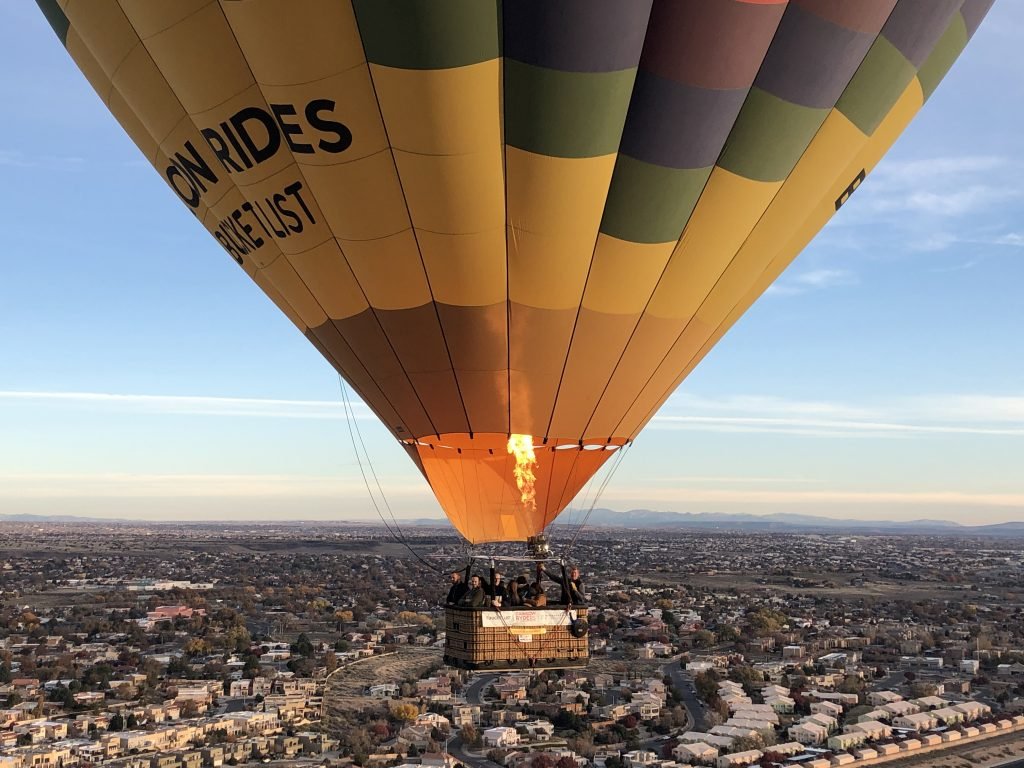

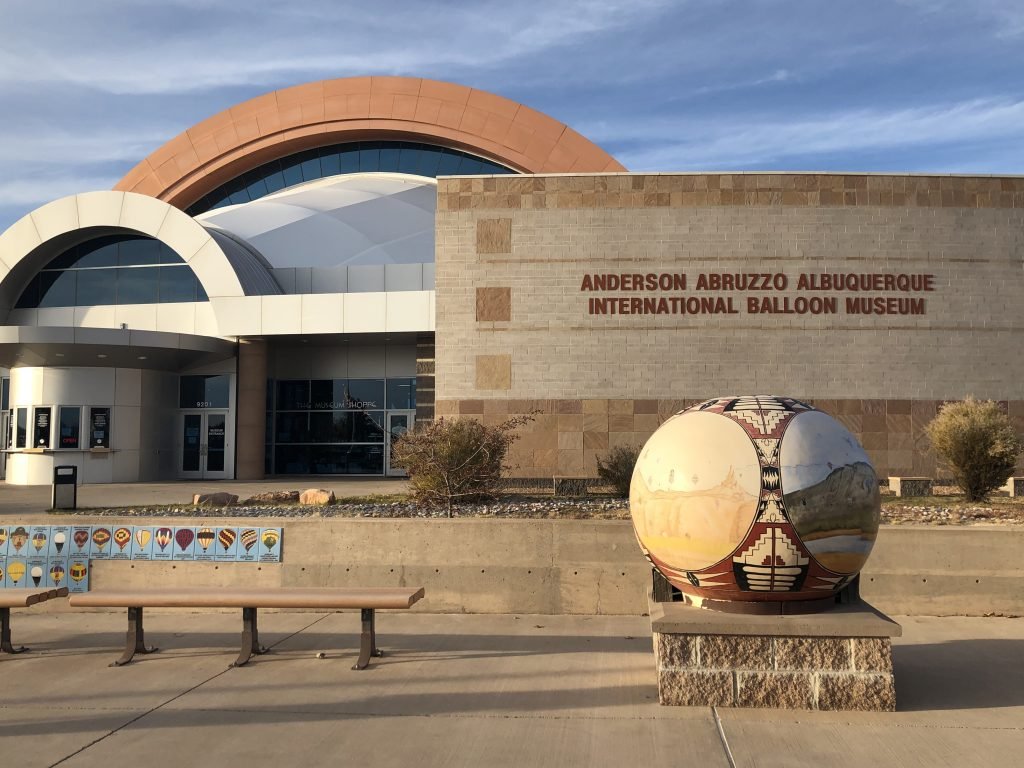
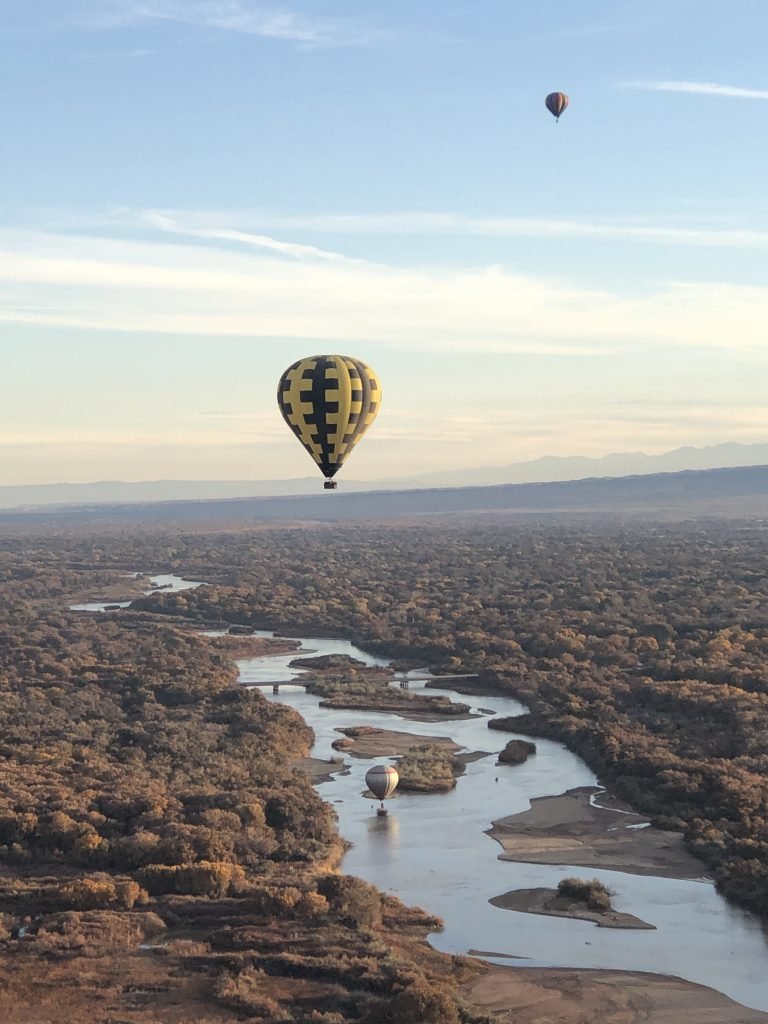




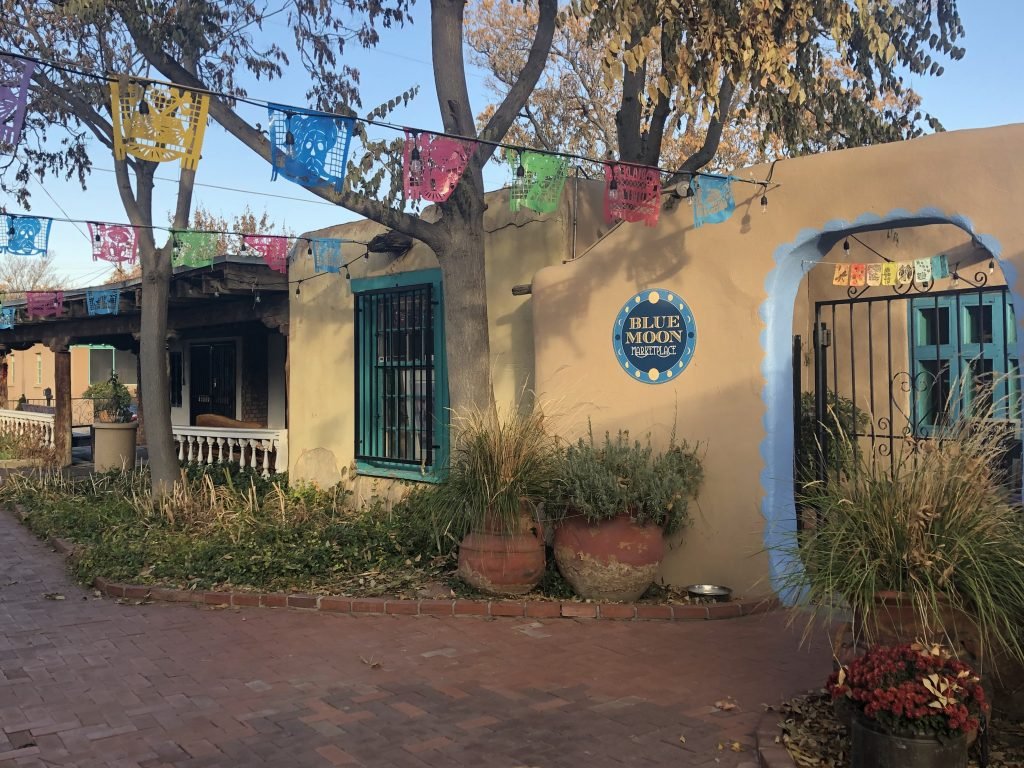















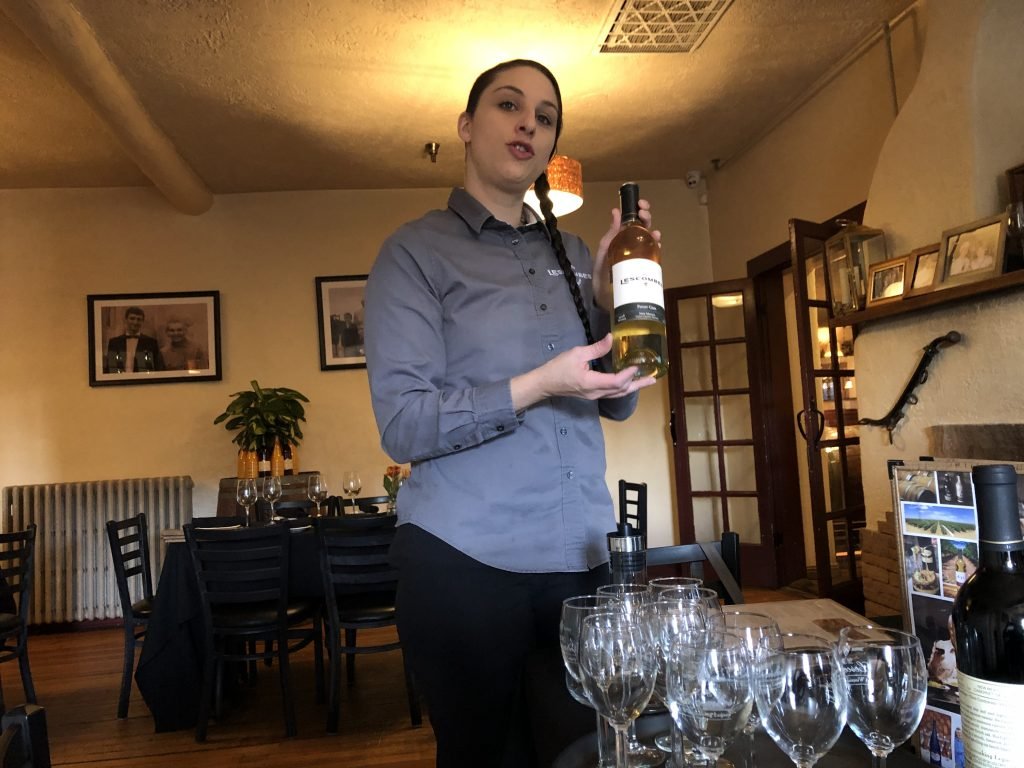


![Levon Handsome Founder of Joe-Le Soap [INTERVIEW]](https://luxebeatmag.com/wp-content/uploads/2023/03/Levon-Handsome-440x264.png)























